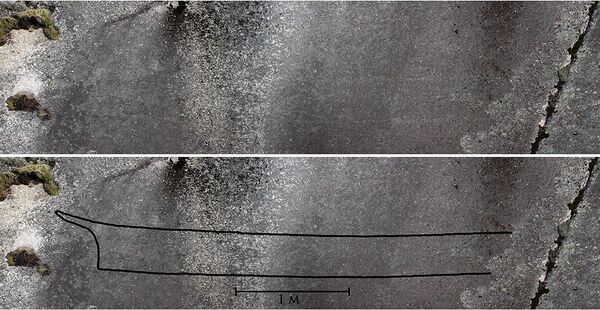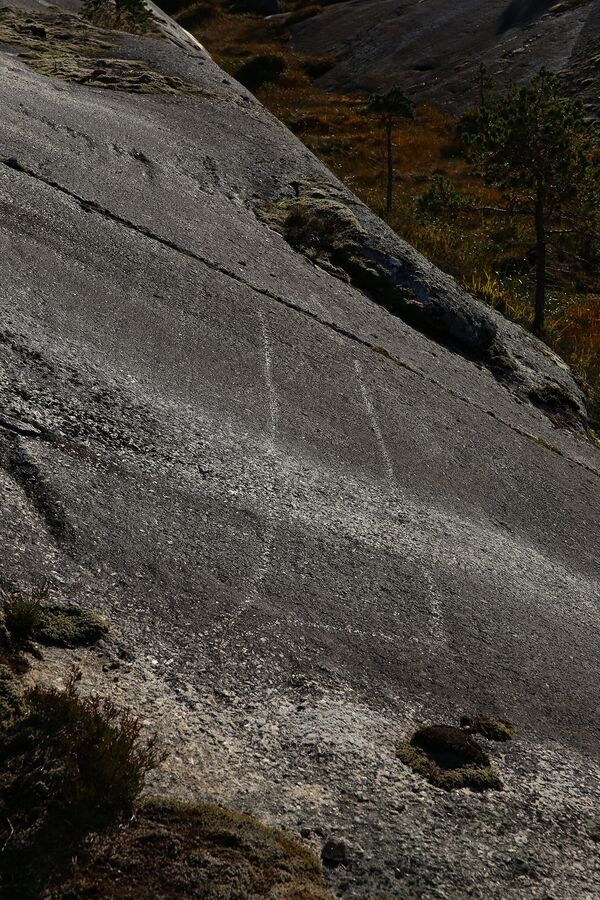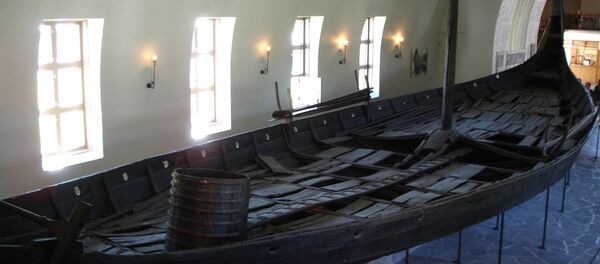Earlier this summer, retired geologist Ingvar Lindahl reported some petroglyphs he had found at Valle in Efjorden, Nordland County. The true significance of the find, however, was only revealed later upon closer look by fellow archaeologists.
Situated some 70 meters above sea level and dating back over ten thousand years, the unique petroglyphs are believed to be the world's oldest rock carvings depicting a boat.
"This here is exceptional. It's really a world sensation that will go into the history books in one way or another," archeologist Jan Magne Gjerde from the University of Tromsø told NRK.
"You must have the light at the right angle to see the figures. They have been dated through the change of sea level. In the Stone Age, the sea was higher up, so we can date the rock carvings through elevations of land. This is how we see that these are between 10,000 and 11,000 years old," Jan Magne Gjerde explained, arguing that the boat is surprisingly well-preserved for a carving that old.
Associate Professor David Vogt from the Cultural History Museum at the University of Oslo called the find spectacular.
"Gee, it's not only the oldest, but also the biggest one," David Vogt told NRK, admitting that more exact dating might be problematic.

According to Gjerde, the outline of the boat is reminiscent of skin boats found on Greenland.
"You have a keel line, a gunnel line and a stylish ending at the stern of the boat. It is impossible to describe findings such as this, it's unbelievably artful," Gjerde said.

In 1932, a series of similarly difficult to detect animalistic rock carvings depicting a porpoise, a seal and a bear were found at Valle.
Petroglyphs, also known as carvings or engravings, are images created by removing part of a rock surface by incising, picking, carving, or abrading. They are found worldwide, and are often associated with prehistoric peoples.
3000 y. old unknown rock carvings discovered in Østfold #Norway #helleristning #petroglyphs https://t.co/pIZsTACbhT pic.twitter.com/xIsyZ9wbqH
— Ellen Hagen (@northbird_ellen) 26 июля 2016 г.





